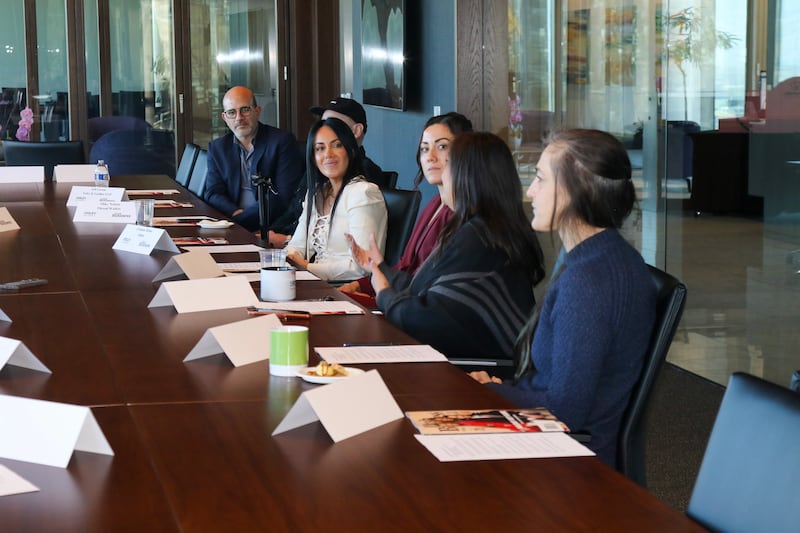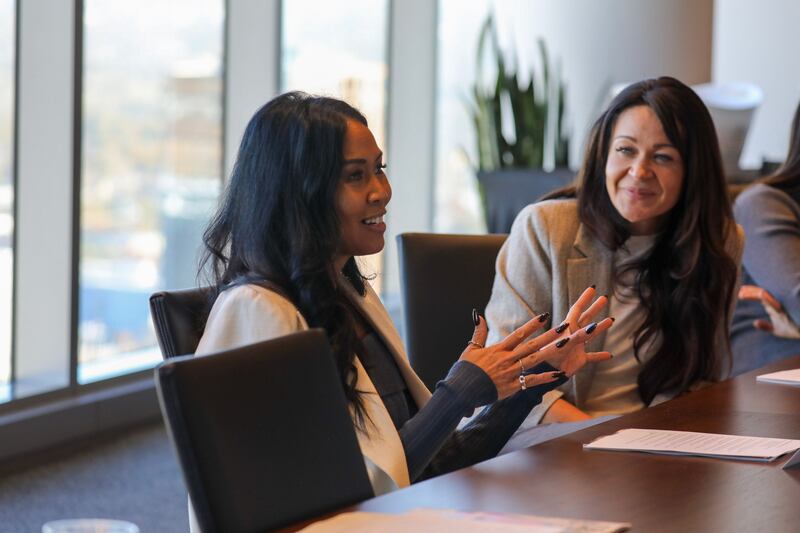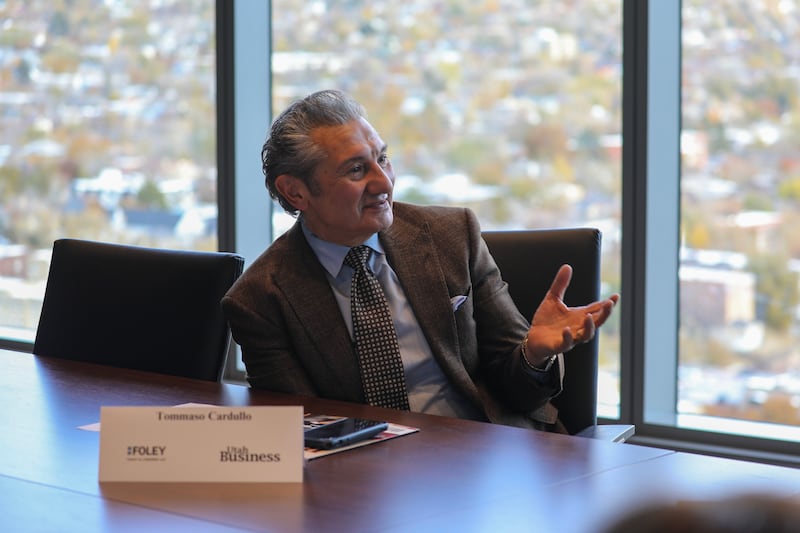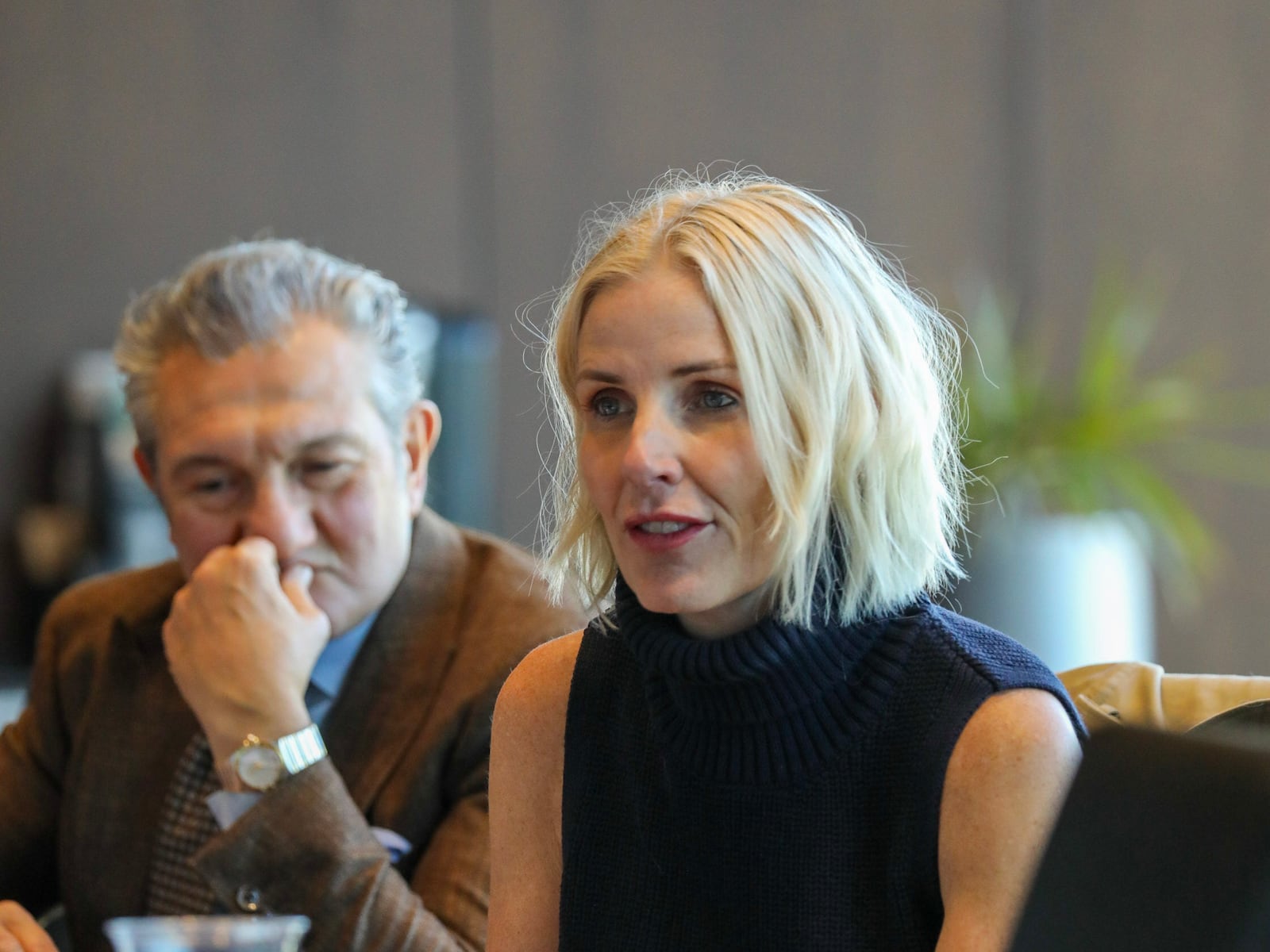Last month, Utah Business partnered with Foley & Lardner to host a roundtable featuring Utah’s fashion experts. This conversation was moderated by Fernanda Böhme, co-founder of böhme.
What challenges have your organizations faced that ultimately led to growth or improvement?
Jen Clyde | Co-Founder & CEO | Fore All
I think every single day you experience some sort of issue and problem, and every year brings new problems. ... We’ve seen a 300 percent increase in our company this year. So now I have to think about operations a lot more and how we’re fulfilling things. We’re getting choosy on whether we’re going to allow Nordstrom to carry Fore All versus Dick’s Sporting Goods. We ended up moving our warehouse to Chicago. ... It’s been one of the hardest things; I had to let go of a lot of control. But it’s been really great, and we’ve already seen growth from it.
Mike Nelson | Chief Product Officer | Thread
I think if you understand the context of the problem, it really helps point you in the direction of a good solution. We found that the problems we think our customers face are different than the ones they really face. ... Really connecting with our customers and understanding how we can better serve them and try to really gain that context has been beneficial.
Pualeiala Lynn | Owner | EDYNKEI
For me, it was the issue of women coming in and seeing them try something on and knowing that the size up would fit them perfectly, but they refused to even try on that size because of what they make the tag mean about themselves. ... I had a client come in who was a local regular customer who said, “I love to come here because it’s a safe place to try things on.”

If you have a physical location, how has it enhanced your brand and customer experience?
Jenn Hirsch | Sr. Performance Designer, Owned Brands | Backcountry
It’s really interesting for us to see the difference between what sells better online and what sells better in-store. It really shows, from a design perspective, what is enhanced in the customers’ eyes by being able to be touched and felt and tried on and seen on their bodies. ... For example, this season, we released a collarless vest for men. It’s a great layering piece and is also a bit more fashion-forward in the spectrum of outdoor. The in-store sales are so high compared to the online sales.
Pualeiala Lynn | Owner | EDYNKEI
I have a statistic from ServiceChannel: 86 percent of consumers still make half their purchases in-store. Saying that it’s the retail apocalypse is not true. There are so many people, especially women, who like to shop in-store.

How do you find and keep talent?
Amy Rasmussen | Co-Founder & Co-Owner | Nani Swimwear
One thing COVID-19 taught us was that remote work was possible. ... To really get those key creative people, we’ve gone to more remote work. We have an amazing salesperson in Dallas and a graphic designer who was living in Alaska. … Getting a higher level of talent has proven to be really successful for our brand.
Mike Nelson | Chief Product Officer | Thread
I’ve really found that trying to be the kind of boss you would want has worked well. ... You try to be understanding, you try to be flexible, you try to be all these things that allow them to be successful ... and do it in a way that is very much free but with a high expectation of accountability.
Tommaso Cardullo | Owner & Designer | Tommaso Cardullo
Informal rewards are becoming more and more significant. … It’s not just the vocation, but it’s the recognition. For example, we made 24 outfits for a trucking company — we are a custom suiting company. None of these people had ever experienced custom clothing. Some of them wear only boots, jeans and hoodies, and here they were getting a custom suit or a dress. The return on investment was exponential. The CEO said, “They never were so happy, so satisfied to receive a reward.”

With the rising costs of doing business online, how have you pivoted your marketing ad spend to maintain your revenue?
Mike Nelson | Chief Product Officer | Thread
It’s forced us to … pay more attention to the things that are working and be very surgical when we see something work, doing more of that until we see it not work. ... TikTok Shop, regardless of where you sit politically, is so effective. So are LTKs, where you see an influencer wearing something, click the link, and it takes you right to the product.
Amy Rasmussen | Co-Founder & Co-Owner | Nani Swimwear
We’ve pushed our business B2B and DTC the same at the same time. That’s been super successful for us at different times, like through COVID when stores shut down. We lost a lot of our B2B sales that year, but our DTC shot through the roof. Now, DTC is cutting back a little bit as people move back into stores. … We run an insane amount of digital ads. I loved when you said surgical, Mike, because that’s how we’ve had to get with them. We optimize and follow what we’re finding success in and pull back on the rest.

When have you felt it was the right time to raise capital versus maintaining control of your equity?
Laura Ganoza | Partner | Foley & Lardner
You have to make yourself ready for when the capital is going to come in. You don’t become ready when you say, “OK, let’s go to market tomorrow to try to find investors.” You do it from the very, very beginning. ... Have your cap table. Have your IP locked down. ... If you’re looking into when the right time to partner with someone is, it has to complement what you’re doing.
Amy Rasmussen | Co-Founder & Co-Owner | Nani Swimwear
It goes back to what your goals are and whether your goal is to grow as quickly as you can. We have always kept our equity — that was more important to us. ... We were invited to do the “Shark Tank” thing, and we just thought, “We don’t need it.” ... We’ve been able to grow by financing big inventory buys.

What advice would you give someone going into the apparel/retail goods industry?
Jenn Hirsch | Sr. Performance Designer, Owned Brands | Backcountry
When you work at really big brands, it’s easy to get pigeonholed and only learn a very narrow scope of work. I’m really fortunate that my background has spanned men’s, women’s, lifestyle and performance. I’ve worked for small companies where it’s all hands on deck, and I’ve been at trade shows showing product. … Whether you’re looking to start your own brand or work for somebody else, learn all the aspects. Study retail and merchandising. That way, even if you want to focus on design, you know how to interact with your cross-functional partners and stay up on the tools of the trade. … Be ahead on Illustrator; be ahead on what’s happening with AI and 3D design, and that will really make you stand out in terms of bringing a lot to the table. Even if you’re at a company where roles and responsibilities are more siloed, you can take the step to ask, “Hey, once I hand this deliverable off to you, what’s your next step in the process?”
Tommaso Cardullo | Owner & Designer | Tommaso Cardullo
First, become a generalist. ... If you have the passion and you have the gift, it’s not given randomly. It’s given purposely to you, and you need to use it and magnify it. ... Put in your 10,000 hours learning everything first, then become a specialist in one area.
Amy Rasmussen | Co-Founder & Co-Owner | Nani Swimwear
Being authentic is something that becomes a little bit more difficult as a bigger brand, but customers look for that. They want authenticity, and they want to connect with your brand. My advice is to find what makes you special, … and then don’t lose it.
Jen Clyde | Co-Founder & CEO | Fore All
Don’t look at everything else all the time. Stay focused. Remember why you did what you did in the very beginning and always come back to that. When you’re feeling lost, just go back to square one. … Focus on what you do as a company with your team and your investors, and do it well.


